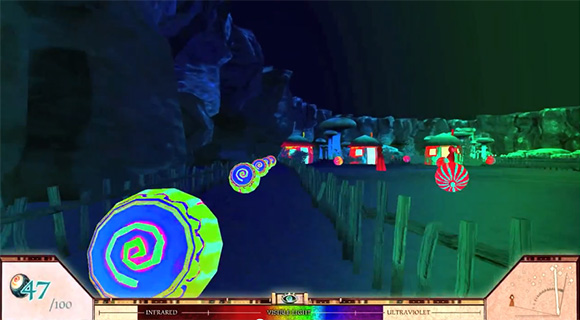ADVERTISEMENT
Filtered By: Scitech
SciTech
Travel at light speed in this game based on real physics
What better way to explain an intimidating subject —like special relativity— than with a video game?
That's what the Massachusetts Institute of Technology (MIT) just did with "A Slower Speed of Light," a first-person prototype game for Mac and PC.

"(P)layers navigate a 3D space while picking up orbs that reduce the speed of light in increments. Custom-built, open-source relativistic graphics code allows the speed of light in the game to approach the player's own maximum walking speed," it said.
It said the game combines accessible gameplay and a fantasy setting with theoretical and computational physics research.
Visual effects of special relativity gradually become apparent to the player and increase the challenge of gameplay, it added.
Effects rendered in real time include:
- the Doppler effect (red- and blue-shifting of visible light, and the shifting of infrared and ultraviolet light into the visible spectrum)
- the searchlight effect (increased brightness in the direction of travel)
- time dilation (differences in the perceived passage of time from the player and the outside world)
- Lorentz transformation (warping of space at near-light speeds)
- runtime effect (the ability to see objects as they were in the past, due to the travel time of light)
"Players can choose to share their mastery and experience of the game through Twitter," MIT said.
OpenRelativity
OpenRelativity is a set of tools used for simulating the effects of traveling near the speed of light in the Unity3D game engine.
The MIT said its team is refining the documentation, usability and features in OpenRelativity, targeted for release as a free, open-source package in 2013.
It will allow others to produce more simulations and games about traveling near the speed of light.
System requirements
"A Slower Speed of Light" may require PCs using an Intel Core 2 Duo T9900 or Core i7 (2.8GHz clock speed); Windows 7 and Mac OS X 10.7 (Lion); AMD Radeon HD 6970M/AMD Mobility Radeon HD 4850/Nvidia GeForce 9600M GT; and 8GB RAM.
But MIT said some users have reported that the game has been able to run on Windows XP with as little as 2GB RAM.
It added a bug will crash the game on computers with some Intel graphics chipsets.
Game premise
A separate article on Geek.com said the object of the game is to collect 100 floating orbs.
"Each time you collect an orb the game artificially lowers the speed of light. Walking is no longer an easy stroll through town, but a relativistic adventure," it said.
"This game really is awesome, and it even teaches you about physics. High school physics teachers, take note," it added. — TJD, GMA News
More Videos
Most Popular




